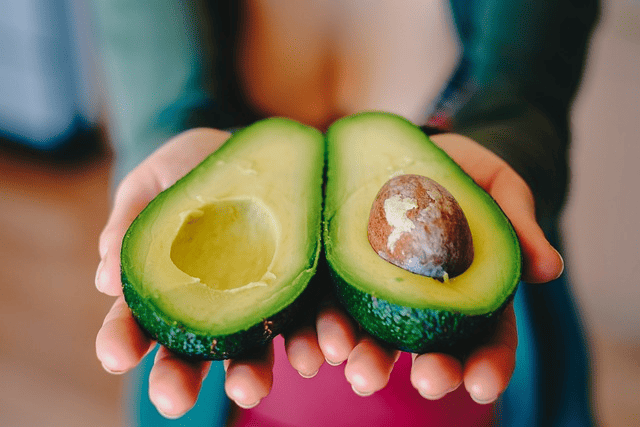Keto 2.0 is a modified version of the popular traditional keto diet that has been gaining popularity in recent years. While the traditional ketogenic diet is known for being extremely high in fat and low in carbs, keto 2.0 takes a more balanced approach.
This diet typically involves consuming 50% of calories from fat, 30% from protein, and 20% from carbs.
One of the key benefits of keto 2.0 is that it can be easier to follow than the traditional ketogenic diet. Many people find the strict macronutrient ratios of the original keto diet to be challenging and may struggle to stick to it long-term.
By allowing for a slightly higher carb intake, this keto diet can be more sustainable for some individuals.
However, it’s important to note that there are currently no formal dietary guidelines for eating this way and the specific macronutrient breakdown can vary depending on who you ask.
Some nutritionists may recommend slightly different ratios, so it’s important to do your own research and consult with a healthcare professional before starting any new diet.
Understanding Keto 2.0

The Basics of Keto 2.0
Keto 2.0 is a modified version of the traditional ketogenic diet that emphasizes the consumption of healthy fats, plant-based foods, and fish while reducing meat consumption. The modified keto diet is designed to help individuals achieve a state of ketosis, where the body burns fat for energy instead of carbohydrates.
One of the key differences between keto 2.0 and the traditional keto diet is the higher carbohydrate limit. While the traditional ketogenic diet typically limits carbohydrate intake to 20-50 grams per day, keto 2.0 allows for up to 100 grams of carbohydrates per day.
This higher carbohydrate limit allows for a greater consumption of health-protective fruits, vegetables fatty fish, whole grains, and legumes, which are staples of the Mediterranean diet.
Another important aspect of keto 2.0 is the emphasis on healthy fats. While the traditional keto diet often has saturated fat and relies heavily on saturated fats from animal sources, the updated version encourages the consumption of healthy fats from plant-based sources such as avocados, nuts, and seeds.
The Science
The science behind Keto 2.0 is rooted in the metabolic process of ketosis. When the body is in a state of ketosis, it burns fat for energy instead of carbohydrates. This leads to a reduction in body fat and an improvement in overall metabolic health.
Research has shown that the traditional ketogenic diet can be effective for weight loss and improving metabolic health markers such as blood sugar and cholesterol levels. However, the traditional ketogenic diet can also be difficult to sustain due to its restrictive nature.
Keto 2.0 offers a more flexible approach to the ketogenic diet that may be easier for individuals to follow long-term. By allowing for a higher carbohydrate intake and emphasizing healthy fats and plant-based foods more carbs, keto 2.0 may offer similar benefits to the traditional ketogenic diet while also promoting overall health and sustainability.
Overall, Keto 2.0 is a modified version of the traditional ketogenic diet that emphasizes healthy fats, plant-based foods, and fish while reducing meat consumption. The diet is designed to help individuals achieve a state of ketosis and improve overall metabolic health.
Keto vs Keto 2.0

Nutritional Differences
Keto and Keto 2.0 are both low-carb, high-fat diets that aim to put the body in a state of ketosis. However, there are some key nutritional differences between the two.
The traditional keto diet requires a macronutrient breakdown of 75% fat, 20% protein, and 5% carbohydrates.
Keto 2.0 allows for a slightly higher carbohydrate intake, with a macronutrient breakdown of 50% fat, 30% protein, and 20% carbohydrates. This higher carbohydrate limit allows for a greater variety of foods and can make the original keto diet much easier to follow for some individuals.
Another difference between the two diets is the type of fat consumed. While the traditional keto diet emphasizes saturated fats, keto 2.0 focuses on consuming fat from plant-based foods while reducing meat consumption. This makes the diet more environmentally sustainable and may offer some additional health benefits.
Health Benefits Comparison
Both the traditional ketogenic diet and keto 2.0 have been associated with several health benefits. However, the two diets may offer different advantages.
One of the primary benefits of the ketogenic diet is weight loss. By reducing carbohydrate intake and increasing fat intake, the body enters a state of ketosis, where it burns fat for fuel instead of glucose. This can lead to significant weight loss over time.
In addition to well-being due to weight loss, the ketogenic diet has been shown to improve insulin sensitivity, inflammation, and cognitive function.
Keto 2.0 may offer some additional health benefits. By focusing on plant-based fats and reducing meat consumption, the diet may be more environmentally sustainable and may reduce the risk of certain chronic diseases, such as heart disease and cancer.
Overall, both the traditional keto diet and keto 2.0 can be effective for weight loss and improving overall health. However, individuals should choose the diet that best fits their lifestyle and nutritional needs.
Keto 2.0 Food List

When following the Keto 2.0 diet, it is important to focus on consuming plant-based fats and proteins while limiting carbohydrate intake. Here is a breakdown of the foods to include, eat, and avoid on the keto 2.0 food list.
Foods to Include
-
Healthy Fats: Avocado, olive oil, coconut oil, nuts (such as almonds, macadamia nuts, and walnuts), and seeds (such as chia, flax, and hemp seeds) are all great sources of healthy fats that can be included in the keto 2.0 diet.
-
Proteins: Plant-based proteins such as tofu, tempeh, and seitan can be included with this eating plan. Legumes such as lentils, chickpeas, and black beans can also be consumed in moderation.
-
Non-Starchy Vegetables: Leafy greens, broccoli, cauliflower, zucchini, asparagus, and peppers are all great options for non-starchy vegetables that can be included in your meal planning.
-
Low-Carb Fruits: Berries such as strawberries, raspberries, and blackberries are low in carbohydrates and can be consumed in moderation on this diet.
Foods to Avoid
-
Processed Foods: Processed foods such as chips, crackers, and cookies should be avoided as they are typically high in carbohydrates and unhealthy fats.
-
Grains and Starchy Vegetables: Grains such as rice, wheat, and corn should be avoided on the keto 2.0 diet. Starchy vegetables such as potatoes, sweet potatoes, and corn should also be limited.
-
High-Carb Fruits: Fruits such as bananas, grapes, and mangoes are high in carbohydrates and should be avoided on the keto 2.0 diet.
-
Dairy Products: Dairy products such as milk, cheese, and yogurt should be avoided or consumed in moderation on the keto 2.0 diet as they can be high in carbohydrates.
By following the Keto 2.0 food list, individuals can achieve their health goals while enjoying a variety of delicious and nutritious foods.
Implementing Keto 2.0

Keto 2.0 is a modified version of the keto diet that emphasizes a higher intake of healthy fats, moderate protein, and lower carbohydrates. Here are some tips for implementing keto 2.0 into your healthy lifestyle already.
Meal Planning
Meal planning is an essential part of implementing keto 2.0. A well-planned meal can help you stay on track and avoid the temptation of unhealthy foods. Here are some tips for meal planning:
-
Plan your meals in advance: Planning your meals in advance can help you stay on track and avoid the temptation of unhealthy foods.
-
Choose healthy fats: Healthy fats are a crucial part of the keto 2.0 diet. Examples of healthy fats include avocado, olive oil, nuts, and seeds.
-
Include moderate protein: Moderate protein intake is important for maintaining muscle mass and supporting overall health. Examples of protein sources include fish, chicken, beef, and eggs.
-
Avoid high-carb foods: High-carb foods such as bread, pasta, and sugary snacks should be avoided on the keto 2.0 diet.
Tips for Success
Here are some tips for success when implementing Keto 2.0:
-
Stay hydrated: Staying hydrated is essential for overall health and can help you avoid the symptoms of the keto flu.
-
Monitor your intake of electrolytes: Electrolytes such as sodium, potassium, and magnesium are essential for maintaining proper bodily function. Make sure to monitor your intake of electrolytes and supplements if necessary.
-
Don’t be too restrictive: While it’s important to avoid high-carb foods, it’s also important not to be too restrictive. Incorporating a variety of healthy foods into your diet can help you stay on track and avoid boredom.
-
Seek support: Seeking support from friends, family, or a healthcare professional can help you stay motivated and on track.
Summary
Keto 2.0 is an updated version of the traditional ketogenic diet, offering a more balanced approach with 50% of calories from fat, 30% from protein, and 20% from carbs. This modification makes it potentially easier to follow and more sustainable than the original ketogenic diet, which is known for its strict macronutrient ratios and high fat content.
To be successful with keto 2.0, meal planning, staying hydrated, monitoring electrolyte intake, and not being overly restrictive are important. Support from friends, family, or healthcare professionals can also aid in maintaining this diet.
Implementing keto 2.0 a low carb diet can be a challenge, but with proper planning and support, it can be a sustainable and healthy way of eating.
Frequently Asked Questions
What is Keto 2.0 and how does it differ from the traditional keto diet?
Keto 2.0 is a modified version of the traditional ketogenic diet. It allows for a higher carbohydrate intake and less emphasis on fat, particularly saturated fats. Unlike the standard keto diet, which typically includes 70% of calories from fats, keto 2.0 suggests a macronutrient distribution of around 50% fat, 30% protein, and 20% carbohydrates. This version emphasizes plant-based foods and fish over animal fats and red meat.
What are the primary benefits of adopting Keto 2.0?
Keto 2.0 is considered to be easier to follow and more sustainable than the traditional ketogenic diet. It emphasizes healthier fat sources from plants and fish, potentially making it more heart-friendly. The increased carbohydrate limit allows for a wider variety of foods, including more fruits and vegetables, making it more nutritionally balanced.
Can Keto 2.0 still effectively induce ketosis?
There is some debate about this. Keto 2.0 increases the daily carbohydrate intake compared to traditional keto, which may affect the ability to maintain ketosis. However, it still limits carbs more than a standard diet, which may be sufficient for some individuals to enter a state of ketosis.
Is Keto 2.0 suitable for everyone?
Keto 2.0, like any diet, may not be suitable for everyone. Individuals need to consider their health conditions, dietary preferences, and nutritional needs. Consulting with a healthcare provider or a nutritionist is recommended before starting keto 2.0, especially for those with specific health concerns or dietary requirements.
